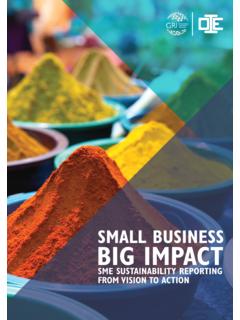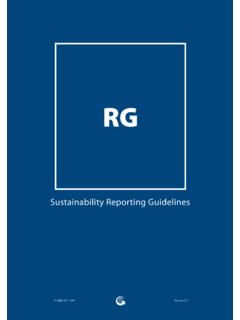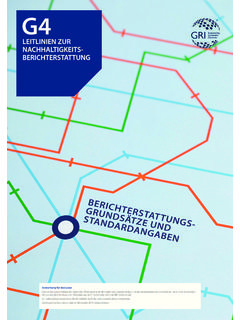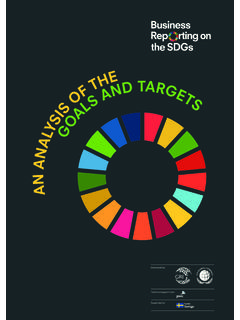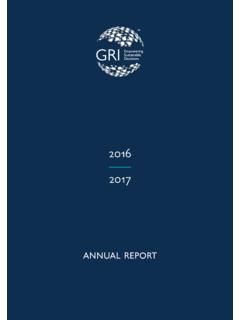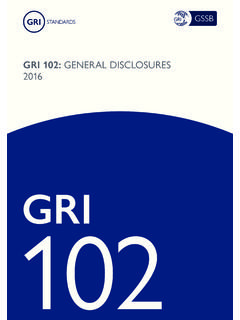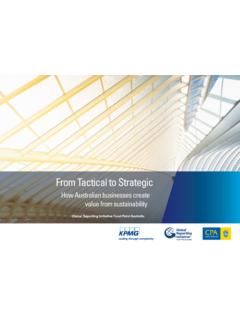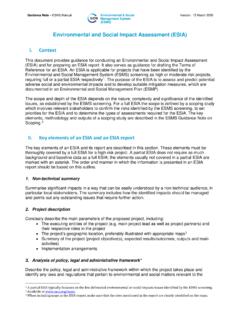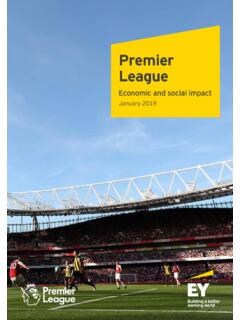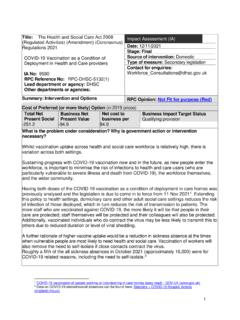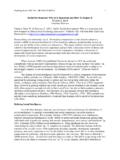Transcription of GRI 414: SUPPLIER SOCIAL ASSESSMENT 2016
1 GRI 414: SUPPLIER SOCIAL ASSESSMENT 2016 GRI 4142 GRI 414: SUPPLIER SOCIAL ASSESSMENT 2016 ContentsIntroduction 3 GRI 414: SUPPLIER SOCIAL ASSESSMENT 51. Management approach disclosures 52. Topic-specific disclosures 7 Disclosure 414-1 New suppliers that were screened using SOCIAL criteria 7 Disclosure 414-2 Negative SOCIAL impacts in the supply chain and actions taken 8 Glossary 9 References 11 ResponsibilityThis Standard is issued by the Global Sustainability Standards Board (GSSB). Any feedback on the GRI Standards can be submitted to for the consideration of the GSSB.
2 ScopeGRI 414: SUPPLIER SOCIAL ASSESSMENT sets out reporting requirements on the topic of SUPPLIER SOCIAL ASSESSMENT . This Standard can be used by an organization of any size, type, sector or geographic location that wants to report on its impacts related to this referencesThis Standard is to be used together with the most recent versions of the following 101: FoundationGRI 103: Management Approach GRI Standards GlossaryIn the text of this Standard, terms defined in the Glossary are dateThis Standard is effective for reports or other materials published on or after 1 July 2018.
3 Earlier adoption is this Standard Note: This document includes hyperlinks to other Standards. In most browsers, using ctrl + click will open external links in a new browser window. After clicking on a link, use alt + left arrow to return to the previous 414: SUPPLIER SOCIAL ASSESSMENT 2016A. Overview This Standard is part of the set of GRI Sustainability Reporting Standards (GRI Standards). These Standards are designed to be used by organizations to report about their impacts on the economy, the environment, and GRI Standards are structured as a set of interrelated, modular standards.
4 The full set can be downloaded at There are three universal Standards that apply to every organization preparing a sustainability report:GRI 101: FoundationGRI 102: General DisclosuresGRI 103: Management Approach An organization then selects from the set of topic-specific GRI Standards for reporting on its material topics. These Standards are organized into three series: 200 (Economic topics), 300 (Environmental topics) and 400 ( SOCIAL topics). Each topic Standard includes disclosures specific to that topic, and is designed to be used together with GRI 103: Management Approach, which is used to report the management approach for the Using the GRI Standards and making claims There are two basic approaches for using the GRI Standards.
5 For each way of using the Standards there is a corresponding claim, or statement of use, which an organization is required to include in any published materials. 1. The GRI Standards can be used as a set to prepare a sustainability report that is in accordance with the Standards. There are two options for preparing a report in accordance (Core or Comprehensive), depending on the extent of disclosures included in the report. An organization preparing a report in accordance with the GRI Standards uses this Standard, GRI 414: SUPPLIER SOCIAL ASSESSMENT , if this is one of its material topics.
6 2. Selected GRI Standards, or parts of their content, can also be used to report specific information, without preparing a report in accordance with the Standards. Any published materials that use the GRI Standards in this way are to include a GRI-referenced 414: SUPPLIER SOCIAL ASSESSMENT is a topic-specific GRI Standard in the 400 series ( SOCIAL topics).GRI 101: Foundation is the starting point for using the GRI Standards. It has essential information on how to use and reference the Standards. See Section 3 of GRI 101: Foundation for more information on how to use the GRI Standards, and the specific claims that organizations are required to include in any published materials.
7 GRI 103 GRI 102 Topic-specificStandardsUniversal StandardsStarting point for using the GRI StandardsGRI 101 FoundationGeneral DisclosuresManagement ApproachTo report contextual information about an organizationTo report the management approach for each material topicSelect from these to report specific disclosures for each material topicGRI 300 EnvironmentalGRI 400 SocialGRI 200 EconomicFigure 1 Overview of the set of GRI Standards4 GRI 414: SUPPLIER SOCIAL ASSESSMENT 2016C. Requirements, recommendations and guidance The GRI Standards include: Requirements.
8 These are mandatory instructions. In the text, requirements are presented in bold font and indicated with the word shall . Requirements are to be read in the context of recommendations and guidance; however, an organization is not required to comply with recommendations or guidance in order to claim that a report has been prepared in accordance with the These are cases where a particular course of action is encouraged, but not required. In the text, the word should indicates a recommendation. Guidance. These sections include background information, explanations and examples to help organizations better understand the organization is required to comply with all applicable requirements in order to claim that its report has been prepared in accordance with the GRI Standards.
9 See GRI 101: Foundation for more Background contextIn the context of the GRI Standards, the SOCIAL dimension of sustainability concerns an organization s impacts on the SOCIAL systems within which it operates. GRI 414 addresses the topic of SUPPLIER SOCIAL ASSESSMENT . An organization might be involved with impacts either through its own activities or as a result of its business relationships with other parties. Due diligence is expected of an organization in order to prevent and mitigate negative SOCIAL impacts in the supply chain. These include impacts the organization either causes or contributes to, or that are directly linked to its activities, products, or services by its relationship with a concepts are covered in key instruments of the United Nations: see References.
10 The disclosures in this Standard can provide information about an organization s approach to preventing and mitigating negative SOCIAL impacts in its supply chain. Suppliers can be assessed for a range of SOCIAL criteria, including human rights (such as child labor and forced or compulsory labor); employment practices; health and safety practices; industrial relations; incidents (such as of abuse, coercion or harassment); wages and compensation; and working hours. Some of these criteria are covered in other GRI Standards in the 400 series ( SOCIAL topics).
